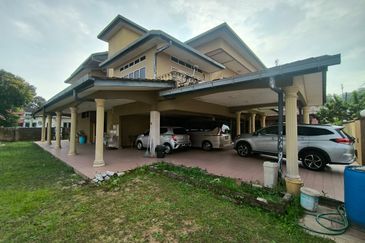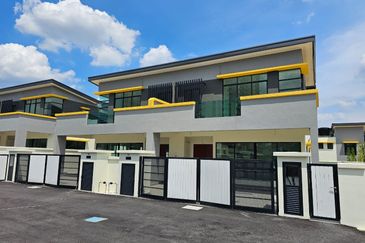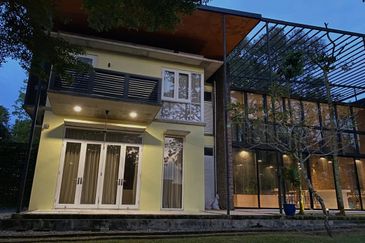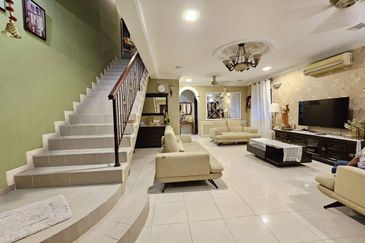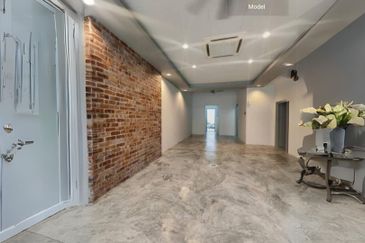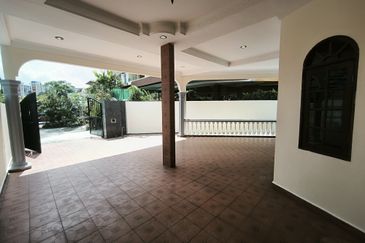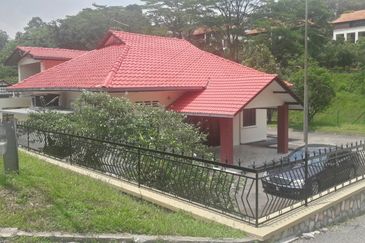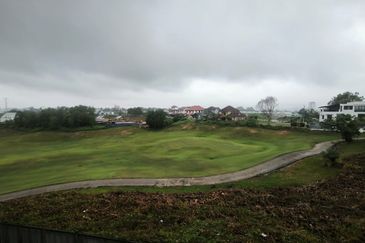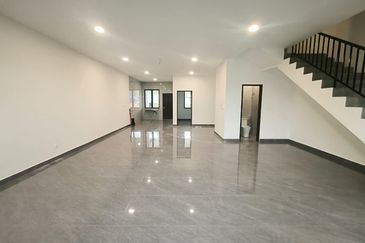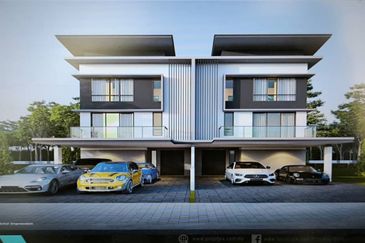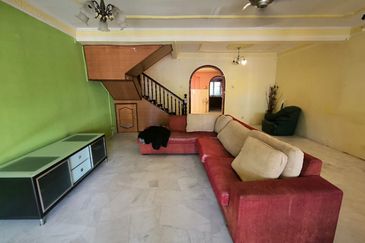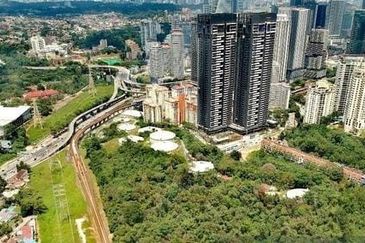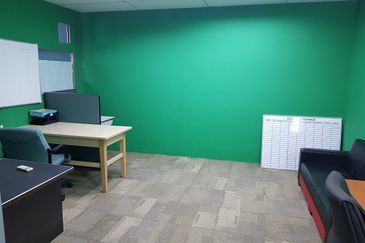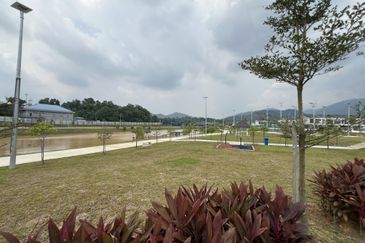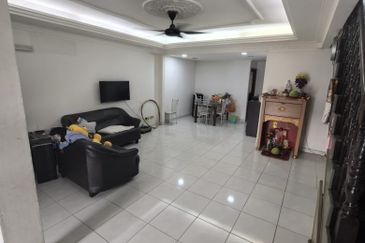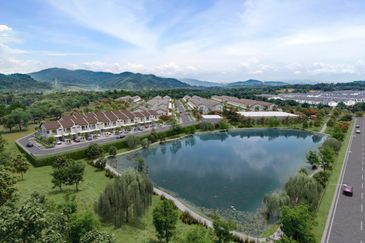


While negative sentiment continues to loom over Iskandar Malaysia’s property sector, UEM Sunrise Bhd managing director and CEO Anwar Syahrin Abdul Ajib is clearly focused on ensuring that its projects there succeed.
“We believe in the story of Iskandar,” seems to be Anwar’s favourite phrase during the interview with The Edge in conjunction with the developer being ranked among the Top 10 of The Edge Malaysia Top Property Developers Awards 2015.
He says a lot of effort has been put into making sure economic activities come to Iskandar Malaysia, which will create job opportunities that, in turn, will generate demand for housing.
“It is just a matter of time, and we will have to meet the demand,” he says. “For example, there is the Petronas plant [Petroliam Nasional Bhd’s Refinery and Petrochemical Integrated Development project or RAPID] in Johor. I am asking my guys if we are doing anything to accommodate the [housing] needs of the workers who will come in upon completion of the project. We need to stay ahead of our competitors.
“The eventual workforce of the project [RAPID] is estimated to be 4,000, with a mix of executive-level employees and low-level workers. What have we done to provide Kuala Lumpur-type facilities for them? No one has actually looked into that. We need to make sure there are enough facilities, such as education and healthcare.”
The public-listed UEM Sunrise, which is the property development arm of UEM Group Bhd, is the result of a merger between UEM Land and Sunrise Bhd in 2010. The merger positioned the company as one of the largest listed property developers in Malaysia with total assets with a combined value of over RM5 billion.
With significant landbank in Johor, UEM Sunrise is the master developer of Nusajaya, one of the five flagship zones in Iskandar Malaysia. Gerbang Nusajaya is the second phase of Nusajaya, spanning over 4,551 acres, that will feature various developments, including Nusajaya Tech Park, Motorsports City, Signature Residences and Gerbang Nusantara.
At the same time, the developer is looking to target locals, especially first and second-time homebuyers. “We need to make sure that we have a decent level of local buyers as we don’t want to rely too much on overseas investors,” Anwar says. “We need to look at the target market and the products have to be right. Also, when we launch a project, we set a [sales] target of 65% but we actually want to get 80%. Property development is very competitive and you don’t get satisfied with what you do but always strive to be better every time.”
In this interview, Anwar shares his views on the property market and his strategies going forward.
The Edge: What sets UEM Sunrise apart from other developers?
Anwar Syahrin Abdul Ajib: We take in young people who can give different ideas and do different things and who are social media savvy. It is a tough business environment now due to the weakening ringgit and the implementation of the Goods and Services Tax. All these things have an impact on market sentiment.
It (is important) to have the right product at the right pricing. This year, we have a mixture of high-end and mid-range properties. Buyers are very sensitive to pricing now, even for the price difference of RM50,000 to RM60,000, which doesn’t add up to much when you spread it over 30 years.
Some developers have reported slower sales and lower profits this year due to the market slowdown. How do you ensure that the company remains profitable?
We need more effort in achieving sales. That’s why we launched our Signature Selection campaign, in which we throw in a lot of goodies and benefits such as kitchen fit-ups. In some projects, we even give free Honda HR-V and Jaguar cars in our lucky draw. The sentiment is a bit low now, so we have to give buyers some excitement, to let them feel that they don’t have to sacrifice something to buy a house. We feel that it is something we need to do and we want our buyers to feel good.
Also, we don’t compromise our quality, even for our overseas projects. Our second project in Melbourne, the Conservatory, was more than 60% sold during our sales preview in September. This figure shows the level of quality we have in our overseas projects and the confidence of overseas buyers in our products.
Our focus now is on the affordable segment to target local buyers. We are also looking at developing or co-developing some catalytic projects in Johor Bahru to create economic activities there. For example, industrial and hospitality projects, convention centres as well as a public and private marina. We will put money into developing these facilities so people will come in.
Landbanking is also very important, especially land in a good location and at a reasonable price.
What are your priorities in the next 12 months?
For Johor, it will be the catalytic projects and we will go for targeted product launches. We still have some inventory we want to sell, so we are looking at a strategy to sell existing products. We may also have to revisit some product launches … maybe not make them too high-end. As I said, target the affordable side more, within the RM500,000 range.
In the Klang Valley, we will launch a mix of development types. For example, for Serene Heights, perhaps we will launch more landed products. However, we are also looking at some niche high-rise developments.
Overseas, there are still good opportunities. We may not be as aggressive as before, and I think what we have right now is enough. We believe we still have a good pipeline of projects. We can launch one project a year. We will go for large-scale projects when the time is right.
We have projects in Melbourne and Vancouver as well as landbank in South Africa. We are the manager for a project in Singapore. We were looking at the UK earlier but it was halted because of the weakening ringgit. We will focus more on Australia because we already have a core team in Melbourne. I would also love to have something in Sydney.
What are your main strategies now?
Pursue strategic landbanking, and at this point in time most likely outside Nusajaya.
We will also focus on niche markets or township types of mixed residential developments, either on our own or in joint ventures and strategic tie-ups. We are still positive about undertaking such arrangements in Nusajaya, most likely in Gerbang Nusajaya. Moreover, we still have three pieces of land outside Malaysia that we have yet to launch — Alderbridge, Canada; St Kilda Road, Melbourne; and Durban, South Africa. Our teams are currently looking at their development plans.
We would also expand the property-related businesses as recurring income, considering we have a few assets both in Nusajaya and the Klang Valley, which at the moment contribute very little to revenue. We plan to leverage existing projects like Publika in Dutamas, Arcoris and Solaris 3 in Mont’Kiara and Mall of Medini in Nusajaya.
We are also looking to expand revenue from our hospitality business with Ledang Clubhouse, Marina Clubhouse and Opera House Symphony Hills; property management with Publika, MAP@Publika, Anjung Strip Mall in Nusajaya and other condominium management and car parks; project management with Duo Residences in Singapore and Radia Bukit Jelutong; as well as potentially leasing services from Arcoris (hotel component) and Impiana in East Ledang, which is slated for completion soon. We have appointed Hyatt House to operate the Arcoris hotel component — a three-star hotel with 287 rooms.
UEM Sunrise has sold some parcels in Iskandar Malaysia. Are you going to sell more land?
We believe in the story of Iskandar very much, but it is now going through a lot of challenges. Like most companies, we need to balance the financials. It is not the right strategy for us to keep borrowing to buy land elsewhere, so that’s why we decided to monetise some land in Johor for the purpose of buying land elsewhere (especially in the Klang Valley).
We want to diversify, but I am not saying that we don’t believe in Iskandar, it has nothing to do with that. It is just that we need to have a balanced financial position and we want to make sure that we are operating at a very comfortable gearing ratio. However, we don’t want to sell just like that. If we have the opportunity to co-develop with other people, we will do it. In Malaysia, the hot spots are still Penang, the Klang Valley and Iskandar Malaysia. We need to look at how we can actually balance our products across the country, but the price must be right.
We don’t want to offer fire sales as well. This year, because of the weak market, many people wanted to buy our land and they were throwing us offers that we felt were not worth it.
Buyers of our overseas projects are very excited about us. They look at us highly, and I feel humbled by this, and I want to make sure that we deliver. We will leverage the name and reputation we have made.
What is the current revenue contribution ratio between local and overseas projects, and what is the targeted ratio? How are you going to achieve it?
Currently, the revenue contribution ratio is 50% from Johor Baru, 35% from the Klang Valley and 15% from overseas. Our three-year goal is 10%, 45% and 45% for overseas, Klang Valley and Johor Baru respectively. So it means we need to find more landbank in the Klang Valley. In Mont’Kiara, we still have 60 acres.
We also have 500 acres in Bangi (Serene Heights), where we are improving access from Lebuhraya Kajang-Seremban to the township and we hope to replicate a Publika there. Many people love Publika in Dutamas, but we have not really capitalised on its success.
What is your plan for Iskandar Malaysia?
The high-speed rail project (between Kuala Lumpur and Singapore) is coming and we are now looking for a plot in Gerbang Nusajaya for a station there. Gerbang Nusajaya is the next phase for us, and it spans 4,000 acres. However, we need to plan it properly to target the right target market. We are working on the infrastructure and facilities. We try to achieve world-class standards because once you have something there, it will be there permanently. If it is not good, it will be an eyesore.
We also want a balanced mix of local and overseas buyers and not be dependent on foreigners. For locals with a budget of about half a million ringgit, we need to make sure that they don’t lose out but benefit from our developments.
Malaysia still depends on foreign investments and we need international companies with worldwide access to come in and invest. Facilities are important, such as two ports and an airport in Johor, but we have yet to fully realise their full potential because we lack job-creating facilities.
Another example is our water taxi facility at Puteri Harbour. It takes two hours from Puteri Harbour to Singapore and we are looking to make the route faster, but it is a busy waterway. We have all the facilities but we are not extending them. Once we are able to do it, plus the MRT, people can get into Singapore within an hour.
We are pushing the team on how we can get different industries to come to Johor (and create jobs), but first of all, we need to offer them the lifestyle and facilities such as sports, recreation and education. All these are important.
There are already Singaporeans who don’t want to stay in Singapore and, eventually, many Singaporeans will also see Singapore as an unaffordable place to live. They can choose to go somewhere not too far away, yet still enjoy world-class facilities and infrastructure. That’s why I believe strongly in our products; we just need to market them better and share the story of its (Nusajaya’s) prospects.
What challenges do you foresee for the property market and UEM Sunrise in the coming year?
We need to work backwards to understand what kind of houses are mostly likely to attract buyers. We know that it is between RM500,000 and RM1 million. We need to know what we can give and help to make the buying process easy for them. We are also looking at directing buyers to banks that are more friendly and aggressive in giving out loans.
The strategy team is always advising the development team of the products we need to offer while the landbanking team is also scouting around for suitable land. This is what we can do.
As a listed company, our job is to sell but the margins may not be as before. That also means it is a volume game now and we need to sell more to reach those margins. Landbanking is critical now so we can be ready for the next up cycle. TEPEA 2015

This article first appeared in City & Country, a pullout of The Edge Malaysia Weekly, on Dec 7, 2015. Subscribe here for your personal copy.
TOP PICKS BY EDGEPROP
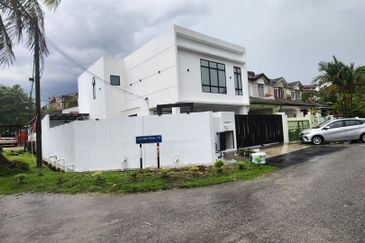
Bandar Damai Perdana, Kuala Lumpur, Kuala Lumpur
Cheras, Kuala Lumpur
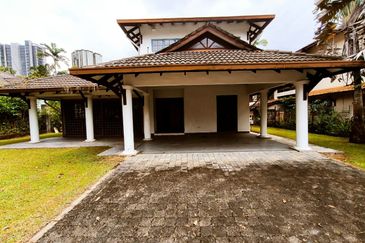
Damansara Heights (Bukit Damansara)
Damansara Heights, Kuala Lumpur
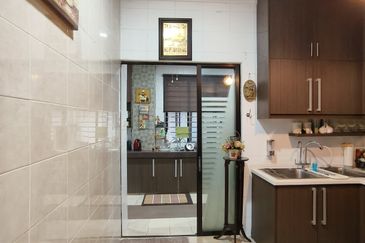
Mutiara Bukit Jalil
Bukit Jalil, Kuala Lumpur

hero.jpg?GPem8xdIFjEDnmfAHjnS.4wbzvW8BrWw)
